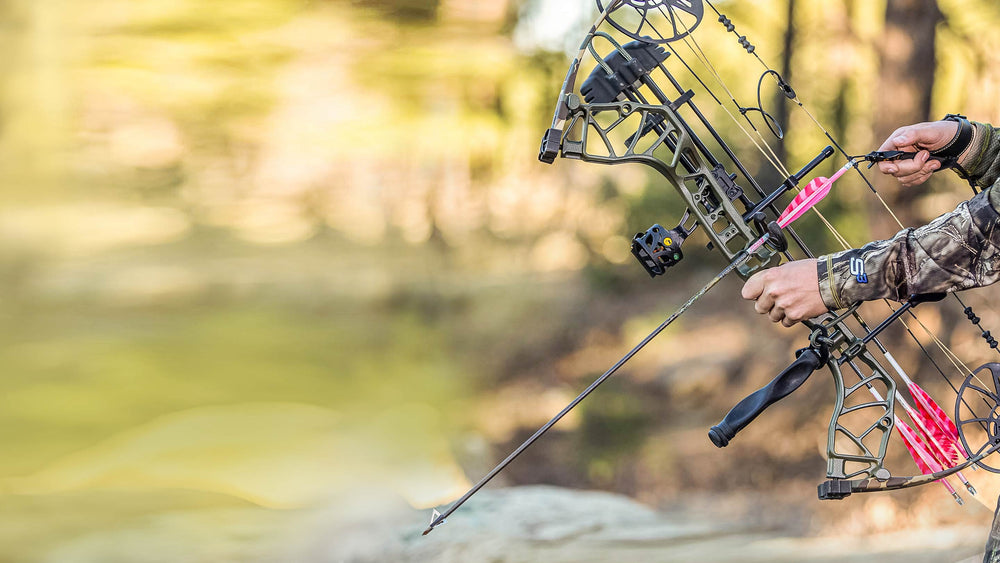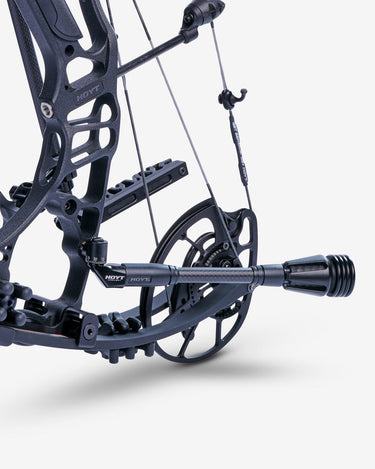Increase Your Archery Performance: The Ultimate Guide to Bow Stabilizer Arrangement
Enhancing your archery efficiency calls for a thorough approach to every element of your devices configuration. Among the various components that contribute to precision and security, the bow stabilizer plays an essential function in fine-tuning your shot execution. Understanding how to optimize your bow stabilizer arrangement can bring about substantial renovations in your total accuracy and consistency on the range or in the area. As we dive right into the ins and outs of choosing the best stabilizer weight, positioning, and fine-tuning techniques, you will certainly reveal the secret to unlocking your full possibility as an archer.
Understanding Bow Stabilizers
In the realm of archery devices, the role and feature of bow stabilizers stand as necessary elements for boosting shooting precision and security. Bow stabilizers are created to minimize bow torque, reduce vibrations, and aid in holding the bow constant throughout the intending and release procedure. By attaching a bow stabilizer to the riser of the bow, archers can experience better balance and lowered hand shock, resulting in even more precise and regular shots.
The primary function of a bow stabilizer is to wet any type of vibrations that happen upon launching the arrowhead. This reduction in vibration not only enhances the shooter's comfort but also assists keep emphasis and control throughout the shot cycle. In addition, bow stabilizers help in reversing the weight of accessories affixed to the bow, such as sights, quivers, and arrowhead relaxes, making certain optimal weight distribution for boosted security.
Recognizing the mechanics and benefits of bow stabilizers is crucial for archers looking to fine-tune their shooting efficiency and accomplish higher accuracy on the array or in the area.

Choosing the Right Stabilizer Weight
Picking the proper weight for your bow stabilizer is a critical aspect of enhancing your archery setup for boosted shooting efficiency. The stabilizer weight straight influences exactly how effectively the stabilizer reduces resonance and stabilizes your bow during the shot. When choosing the ideal stabilizer weight, it's important to consider your shooting design, bow equilibrium, and personal choices.
Lighter stabilizers, normally considering between 3-6 ounces, are preferred by archers who focus on maneuverability and fast target acquisition. These stabilizers are perfect for seekers or those who shoot in challenging terrains where mobility is essential. On the various other hand, much heavier stabilizers, ranging from 8-12 ounces or more, are favored by target archers looking for maximum stability and reduced bow movement. The added weight aids hold the bow steadier throughout the aiming procedure and minimizes the results of torque on the bow.
Eventually, the most effective stabilizer weight for you will depend on your shooting goals and choices. Try out different weights and finding the one that supplies the ideal equilibrium of security and maneuverability is crucial to improving your archery performance.
Setting Up Your Bow Stabilizer
To appropriately install your bow stabilizer, guarantee that you have all the required devices and comply with these detailed instructions for a effective and protected setup. Begin by determining the visit homepage front stabilizer bushing on your bow riser. The majority of bows have pre-threaded holes for stabilizer installment. Next, apply a percentage of bowstring wax to the threads of the stabilizer screw to avoid it from loosening during usage.
Thoroughly thread the stabilizer right into the front bushing by hand, making certain not to cross-thread it (bow stabilizer). When the stabilizer is comfortably in location, use a suitable wrench to tighten it securely. Stay clear of over-tightening, as this can create damages to the bow or stabilizer
After installing the stabilizer, check to ensure it is straight and straightened with the bow. Some stabilizers feature adjustable weights or dampeners; adjust these according to your preferences and shooting style. Last but not least, test the bow to make sure the stabilizer is properly minimizing resonance and boosting your shot consistency.
Changing Stabilizer Position for Precision
After setting up the bow stabilizer securely, enhancing its setting is essential for enhancing accuracy in your shooting. The setting of the stabilizer can dramatically affect the balance check over here and security of your bow during the shot cycle. To change the stabilizer for optimal precision, start by trying out different positions. Moving the stabilizer closer to the riser can help reduce the bow's total weight circulation, possibly improving your intending stability. Alternatively, expanding the stabilizer additionally out can enhance the bow's mercy and reduce the impacts of torque on the shot.
When adjusting the see this page stabilizer placement, think about the type of capturing you do. For target archery, a longer stabilizer placed better out might be advantageous for added security throughout the intending process - bow stabilizer.
Fine-Tuning Your Stabilizer Setup

Furthermore, take into consideration the positioning of any kind of dampeners or weights along the stabilizer pole. Moving these parts closer to or additionally from the riser can alter the stabilizer's overall effect on your bow's balance. Fine-tuning these information can help in reducing resonance, decrease hand shock, and improve overall control throughout the shot implementation.
Consistently reassess your stabilizer arrangement as your capturing method progresses to ensure it remains to match your type and shooting objectives. By finetuning your stabilizer configuration with precision and care, you can enhance your bow's performance and boost your archery skills to brand-new elevations.
Final Thought
Finally, optimizing your bow stabilizer configuration is vital for enhancing your archery efficiency. By understanding the function of stabilizers, selecting the suitable weight, properly placing the stabilizer and installing, and adjust its setup, you can boost your precision and consistency in shooting. Make the effort to try out different configurations and changes to find the configuration that functions finest for you and aids you accomplish your archery objectives.
Bow stabilizers are designed to minimize bow torque, reduce resonances, and aid in holding the bow constant throughout the aiming and launch procedure. By connecting a bow stabilizer to the riser of the bow, archers can experience improved equilibrium and minimized hand shock, resulting in even more accurate and consistent shots.

The stabilizer weight directly influences how successfully the stabilizer minimizes vibration and stabilizes your bow throughout the shot. bow stabilizer. By understanding the objective of stabilizers, picking the appropriate weight, properly setting up and positioning the stabilizer, and tweak its configuration, you can boost your accuracy and uniformity in capturing